No products in the cart.
Farmers Market Guide To Exotic Fruits
We’d like to show you some of the exotic fruits you can find at your local farmers market so you can give them a try. Learn all about where they com from, how they taste, their health benefits and how to eat them.
Dragon Fruit
Background
Dragon fruit is a tropical fruit native to Mexico and Central America and grows from a cactus plant.
The name comes from the fruit having leathery skin and scaly spikes that resemble a dragon’s egg.
Taste
Dragon fruit has a sweet taste that is like a cross between a kiwi and a pear.
Nutrition
Dragon fruit is low in calories but rich in antioxidants, vitamins (vitamins C & E), minerals (iron & magnesium), beneficial plant compounds and fiber. In addition, it promotes a healthy gut and boosts your immune system.
How to Eat
Ripe dragon fruit is bright red (green = unripe) and soft but not mushy. Cut it in half and peel off the skin or scoop out the flesh with a spoon.
It’s great as is or you can add it to a salad or mix it with yogurt.
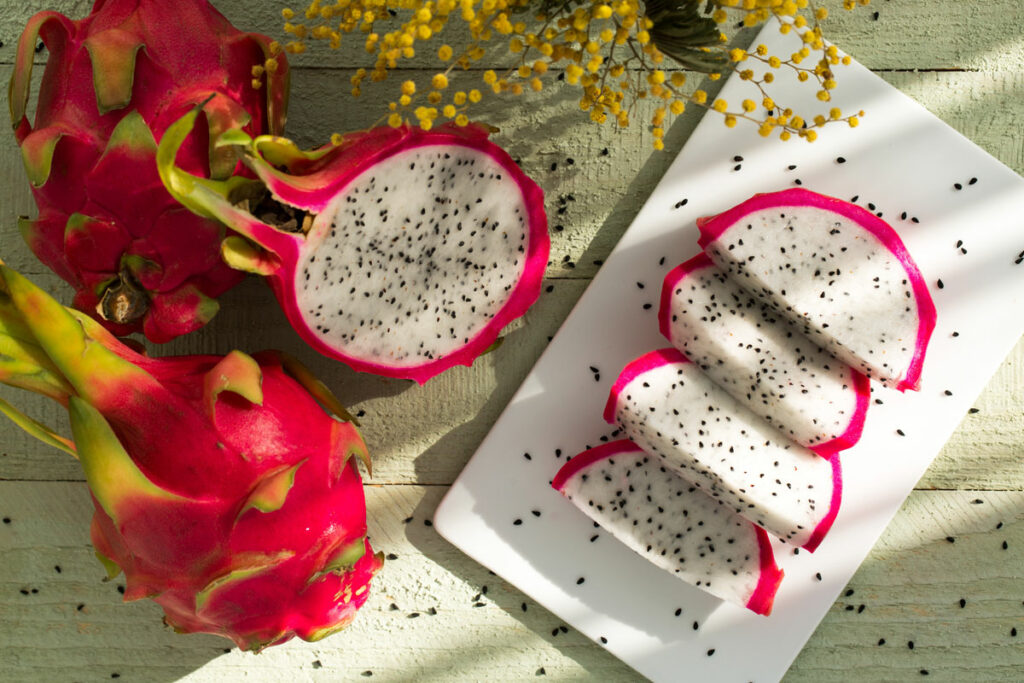
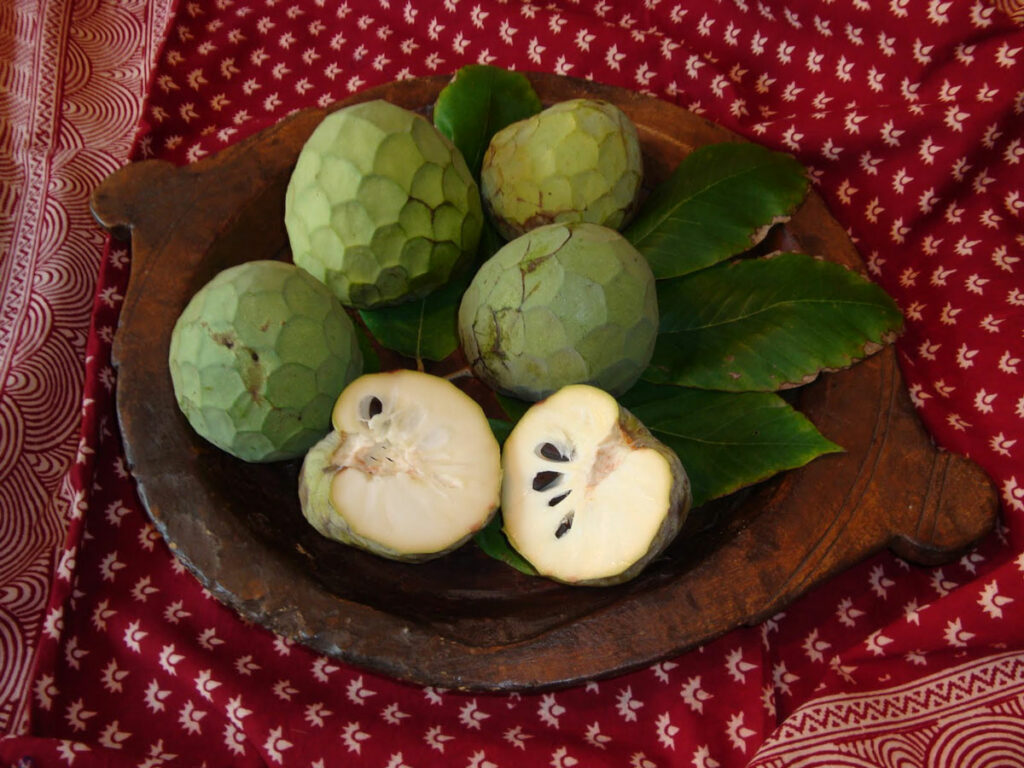
Cherimoya
Background
Thought to have originated in the Andes mountains of South America, it’s grown in tropical areas with high altitudes. It is also known as “custard apple” for its creamy texture. Mark Twain has described the fruit as “the most delicious fruit known to men.”
Taste
Cherimoya has a creamy texture and its flavor is a blend of pineapple, papaya, vanilla, pear, strawberry and even mango.
Nutrition
Cherimoya is rich in antioxidants, vitamins, minerals and fiber. It contains nutrients that may boost your mood and immunity, fight inflammation, and promote eye and heart health. A single cherimoya can also contain more than 5 grams of protein.
How to Eat
Ripe cherimoyas will be soft but not mushy. To eat, cut it in half and use a spoon to scoop out the flesh or you can cut it in to smaller pieces. Make sure to discard the skin and seeds.
You can eat it chilled by itself or use it in a fruit salad, mixed into yogurt or oatmeal, or blended into smoothies or salad dressings.
Guava
Background
Guava is a tropical fruit native to Mexico, Central America, the Caribbean, and northern South America. It contains edible seeds and the leaves are also used in herbal teas and supplements.
Taste
Guava’s flavor is unique and sweet. It is often described as a hybrid between a strawberry and a pear.
Nutrition
Guava is amazingly rich in antioxidants, vitamin C, potassium, and fiber. Its nutrients may help blood sugar control, improve hearth health, relieve symptoms of menstruation and boost your immunity.
How to Eat
When ripe, a guava will turn slightly yellow and soft. It will also become aromatic with a strong, sweet, and musky smell. The whole fruit is edible so wash it thoroughly before eating and either bite into it or cut in to smaller pieces.
Although great by themselves, you can also blend them with your smoothies or add them to sauces and glazes for a tropical twist to go along with savory meals.
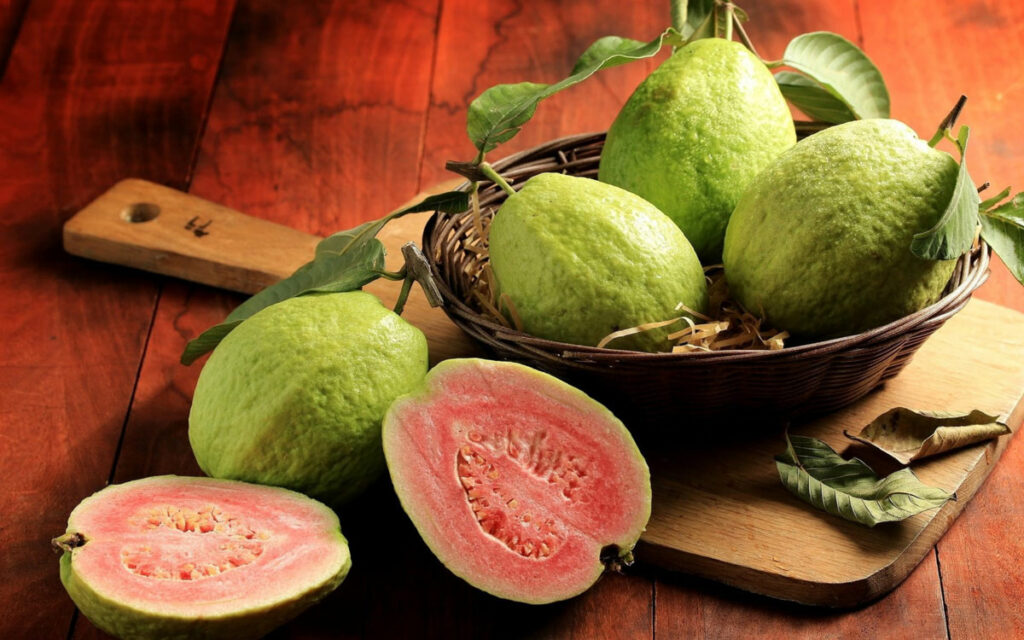

Pomegranate
Background
The pomegranate originated in Iran and northern India, and has been cultivated since ancient times throughout the Mediterranean region. It was introduced into Spanish America in the late 16th century and into California by Spanish settlers in 1769.
Taste
Ripe pomegranates tend to be a little sour and the flavor is often compared to ripe cherries.
Nutrition
Pomegranates are among the healthiest fruits and are loaded with nutrients and fiber. They are high source of vitamins C & K, folate and potassium. In addition they contain punicalagins and punicic acid, two unique substances responsible for most of its health benefits, such as anti-inflammatory effects, lowering blood pressure, fighting arthritis and joint pain, improving heart health, improving blood flow, and improving memory.
How to Eat
Ripe pomegranates have flattened, angular sides and the skin will be smooth and firm. To access the seeds, cut the top off the pomegranate so you can see the 6 distinct sections separated by white flesh. Score the outside of the fruit with a knife following the section lines and then pull the fruit apart.
You can use them to make juices, blend them with smoothies, mix them with yogurt or add them to any salad or dish as a special topping.
Pomelo
Background
Pomelos are native to Southeast Asia and commonly consumed and used for festive occasions throughout southeast Asia. It is one of the original citrus species from which many other citrus fruits derive from (like the grapefruit and common orange).
Taste
Pomelos taste similar to grapefruit but are milder and sweeter. They don’t carry the tangy, bitterness associated with grapefruit.
Taste
Pomelos are particularly rich in vitamin C and potassium and contains several other vitamins and minerals, as well as protein and fiber, while also being low in calories.
How to Eat
Pomelos have a thick rind and you want to first cut about an inch off the top of the pomelo. Then score the sides with a knife, making vertical cuts around the fruit. Now you can start peeling the thick rind off the fruit and separating the inner sections of the fruit. Unlike other citrus fruits, you do not eat the white membrane separating the sections, only the juicy flesh contained within.
Enjoy pomelos by themselves or use it as a substitute in any recipe that calls for citrus. They are phenomenal with salads.
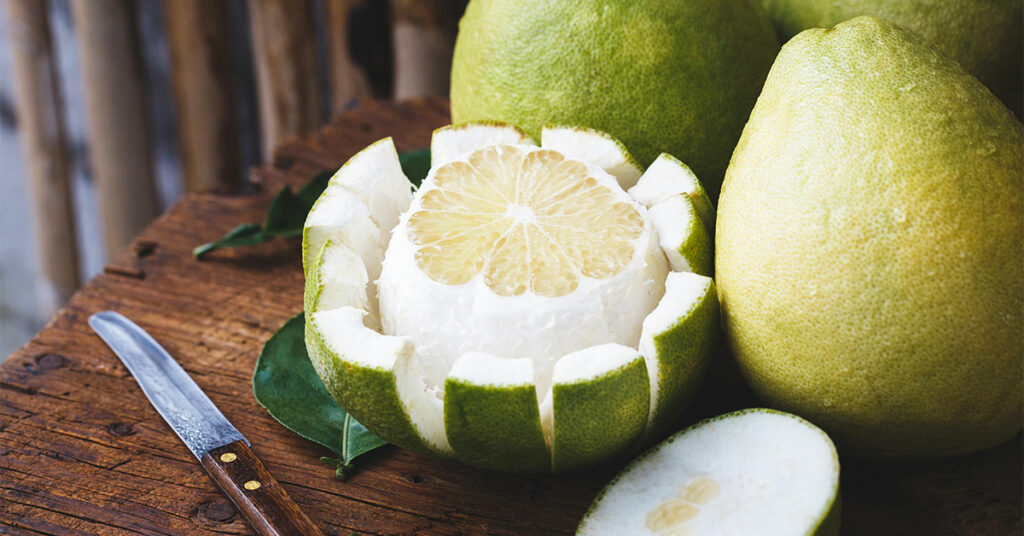
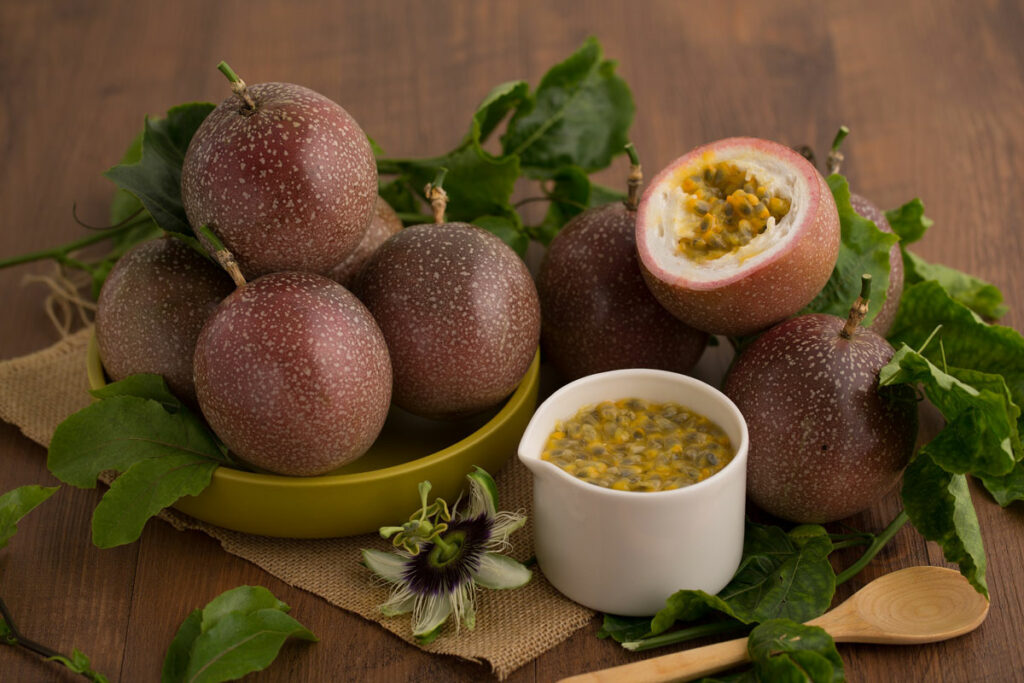
Passion Fruit
Background
Passion fruit is a vine species of passion flower native to southern Brazil through Paraguay and northern Argentina. It got its name from missionaries in Brazil who named the flower after the Passion of Jesus.
Taste
Passion fruit has a unique taste that is sweet and tart.
Nutrition
Passion fruit is a good source of nutrients, especially fiber, vitamin C, and provitamin A. Calorie for calorie, it is one of the most nutrient dense fruits and is also rich in beneficial plant compounds such as carotenoids and polyphenols.
How to Eat
Passion fruit is ripe when the fruits are plump, have a slight give, and are fully colored, either dark purple or dark yellow, orange or red. To eat, cut in half with a knife and use a spoon to scoop out the flesh and edible seeds.
Passion fruit can be enjoyed by itself or you can use it to make make drinks, add it as a dessert topping for cakes and mousse, on salads and mixed with yogurt.
